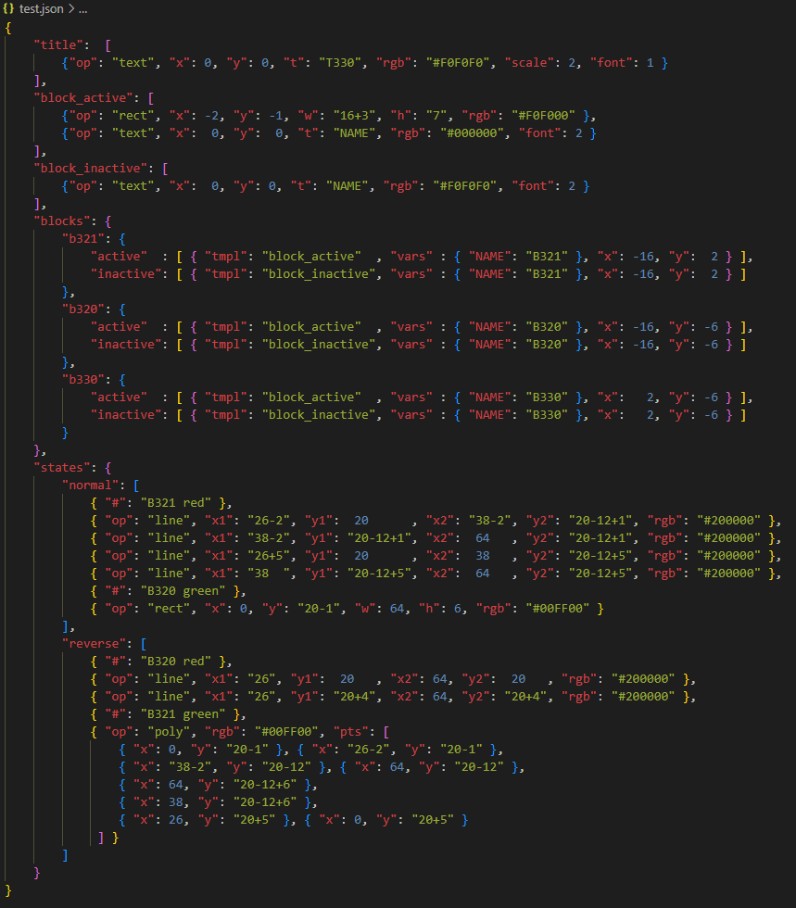Model Train-related Notes Blog -- these are personal notes and musings on the subject of model train control, automation, electronics, or whatever I find interesting. I also have more posts in a blog dedicated to the maintenance of the Randall Museum Model Railroad.
2025-03-30 - Matrix Display for Turnout T330, Continued
Category Arduino
A bit more progress on the Distant Signal project: the initial configuration script consisted of purely graphics primitives, and the automation would select which of the predetermined states to display.
That’s good, but when I’m going to have several of these displays for several turnouts, I realize there’s a lot of repetition because each state represents the entire screen -- thus each state needs to repeat the title, or the block numbers, for example. Instead, the new direction is to have “layers” to avoid repetition:
- A title layer defines the display… title. That’s all.
- A “states” layer defines multiple track states for the given turnout (typically 2).
- A “blocks” layer defines the block numbers to draw next to the track, and that means we can now have active vs inactive blocks and thus render them accordingly.
With that approach, we can change the display to look like this:
The large “T330” is the title of that panel. The track shows a turnout is either a normal or a divergent/reverse pattern. Finally there are 3 blocks numbers.
This isn’t drastically different from the display prototype I had a few days ago, except now the block numbers can be highlighted to represent occupied blocks.
Once a display is initialized with its configuration script, it will receive the turnout state to draw, but also the state of the blocks to show them as occupied or empty.
Thus we change the configuration script from purely a “list of drawing primitives” to something that has a lot more semantics to it. The custom-made text syntax didn’t scale very well. Instead I decided to opt for a JSON-based “syntax”, and here’s an example that defined the panel above:
This is definitely more verbose, and one can question the use of JSON dictionaries as a way to encode “instructions”, yet overall it’s less cryptic than the previous version as the JSON dictionaries keys form a sort of self-documentation. I shall point out that I’m honestly not a huge fan of JSON -- I personally prefer YAML for configuration files. However I need to run in mind this runs on an embedded system after all, and CircuitPython has a native json parsing library that gets the job done.

